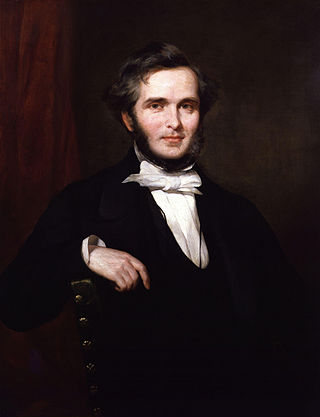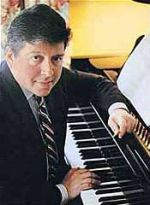In communications and information processing, code is a system of rules to convert information—such as a letter, word, sound, image, or gesture—into another form, sometimes shortened or secret, for communication through a communication channel or storage in a storage medium. An early example is an invention of language, which enabled a person, through speech, to communicate what they thought, saw, heard, or felt to others. But speech limits the range of communication to the distance a voice can carry and limits the audience to those present when the speech is uttered. The invention of writing, which converted spoken language into visual symbols, extended the range of communication across space and time.

The International Standard Book Number (ISBN) is a numeric commercial book identifier that is intended to be unique. Publishers purchase or receive ISBNs from an affiliate of the International ISBN Agency.

In music, timbre, also known as tone color or tone quality, is the perceived sound quality of a musical note, sound or tone. Timbre distinguishes different types of sound production, such as choir voices and musical instruments. It also enables listeners to distinguish different instruments in the same category.
In music, the dynamics of a piece are the variation in loudness between notes or phrases. Dynamics are indicated by specific musical notation, often in some detail. However, dynamics markings require interpretation by the performer depending on the musical context: a specific marking may correspond to a different volume between pieces or even sections of one piece. The execution of dynamics also extends beyond loudness to include changes in timbre and sometimes tempo rubato.
Transatlantic Records was a British independent record label. The company was established in 1961, primarily as an importer of American folk, blues and jazz records by many of the artists who influenced the burgeoning British folk and blues boom. Within a few years, the company had started recording British and Irish artists. The company's philosophy was intentionally eclectic.

Mangalampalli Balamuralikrishna was an Indian Carnatic vocalist, musician, multi-instrumentalist, playback singer, composer, and character actor. He was awarded the Madras Music Academy's Sangeetha Kalanidhi in 1978. He has garnered two National Film Awards, the Sangeet Natak Akademi Award in 1975, the Padma Vibhushan, India's second-highest civilian honor in 1991, for his contribution towards arts, the Mahatma Gandhi Silver Medal from UNESCO in 1995, the Chevalier of the Ordre des Arts et des Lettres by the French Government in 2005, the Sangeetha Kalanidhi by Madras Music Academy, and the Sangeetha Kalasikhamani in 1991, by the Fine Arts Society, Chennai to name a few.

John Curwen was an English Congregationalist minister and diffuser of the tonic sol-fa system of music education created by Sarah Ann Glover. He was educated at Wymondley College in Hertfordshire, then Coward College as that institution became known when it moved to London, and finally University College London.
Néo-trad is a musical style from Quebec that arose around the turn of the 21st century. It can be considered a subgenre of Québécois folk music. The term combines the Greek prefix neo, meaning new, and the contraction of the word traditionnelle, as in traditional music.
International Standard Musical Work Code (ISWC) is a unique identifier for musical works, similar to ISBN for books. It is adopted as international standard ISO 15707. The ISO subcommittee with responsibility for the standard is TC 46/SC 9.

The International Standard Music Number or ISMN is a thirteen-character alphanumeric identifier for printed music developed by ISO.

Joseph Guilherme Raposo, OIH was an American composer, lyricist, songwriter, singer, and pianist, best known for his work on the children's television series Sesame Street, for which he wrote the theme song, as well as classic songs such as "Bein' Green", "C Is For Cookie" and "Sing". He also wrote music for television shows such as The Electric Company, Shining Time Station and the sitcoms Three's Company and The Ropers, including their theme songs. In addition to these works, Raposo also composed extensively for three Dr. Seuss TV specials in collaboration with the DePatie-Freleng Enterprises: Halloween Is Grinch Night (1977), Pontoffel Pock, Where Are You? (1980), and The Grinch Grinches the Cat in the Hat (1982).
Augment or augmentation may refer to:

Mu Phi Epsilon (ΜΦΕ) is a co-ed international professional music fraternity. It has over 75,000 members in 227 collegiate chapters and 113 alumni chapters in the US and abroad.
Patnam Subramania Iyer was a composer and singer of Carnatic music. Subramaniya Iyer followed the traditions of the great composer Tyagaraja. He has left behind almost one hundred compositions.
The millioctave (moct) is a unit of measurement for musical intervals. As is expected from the prefix milli-, a millioctave is defined as 1/1000 of an octave. From this it follows that one millioctave is equal to the ratio 21/1000, the 1000th root of 2, or approximately 1.0006934.
Music Industry Online is an online music magazine that has been reporting on the South African music industry since December 1999 when it was known as PC Music.
Experimental rock, also called avant-rock, is a subgenre of rock music that pushes the boundaries of common composition and performance technique or which experiments with the basic elements of the genre. Artists aim to liberate and innovate, with some of the genre's distinguishing characteristics being improvisational performances, avant-garde influences, odd instrumentation, opaque lyrics, unorthodox structures and rhythms, and an underlying rejection of commercial aspirations.
Daga is a non-Austronesian language of Papua New Guinea. Daga is spoken by about 9,000 people as of 2007. The peoples that speak Daga are located in the Rabaraba subdistrict of Milne Bay district, and in the Abau subdistrict of the Central district of Papua New Guinea.

Sangeet Natak in Marathi language literally means Musical Drama. As the name suggests, this form of drama combines prose as well as poetry in form of songs to convey the story. In a manner, they are very much similar to Musicals. Sangeet Natakas played a vital role in the development of Marathi theater and thus the Marathi cinema as well as Indian film industry. Sangeet Natak start with praise of Lord Natraja which is called as Naandi or Mangalaacharan or Suchakpad usually the famous one "Panchatunda Nararundamaldhar" from Sangeet Shakuntal. They are popular for use of Indian classical music. The "Dramatic Music" is called Natya Sangeet, one of the two popular forms of vocal arts in Maharashtra and surrounding states. The other is Bhavageet.

Systems of musical notation have been in use in China for over two thousand years. Different systems have been used to record music for bells and for the Guqin stringed instrument. More recently a system of numbered notes (Jianpu) has been used, with resemblances to Western notations.








